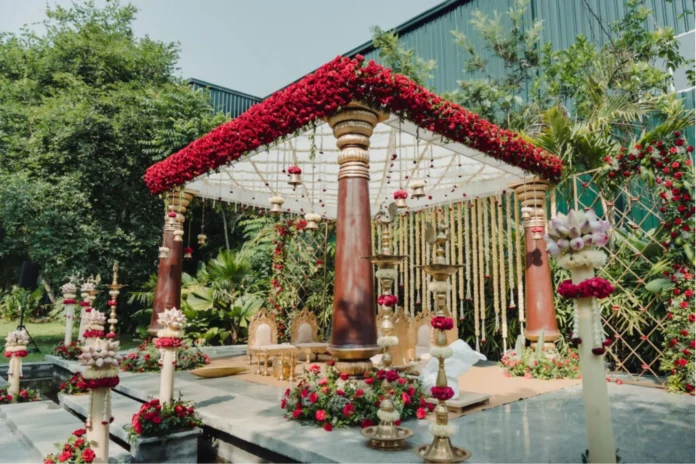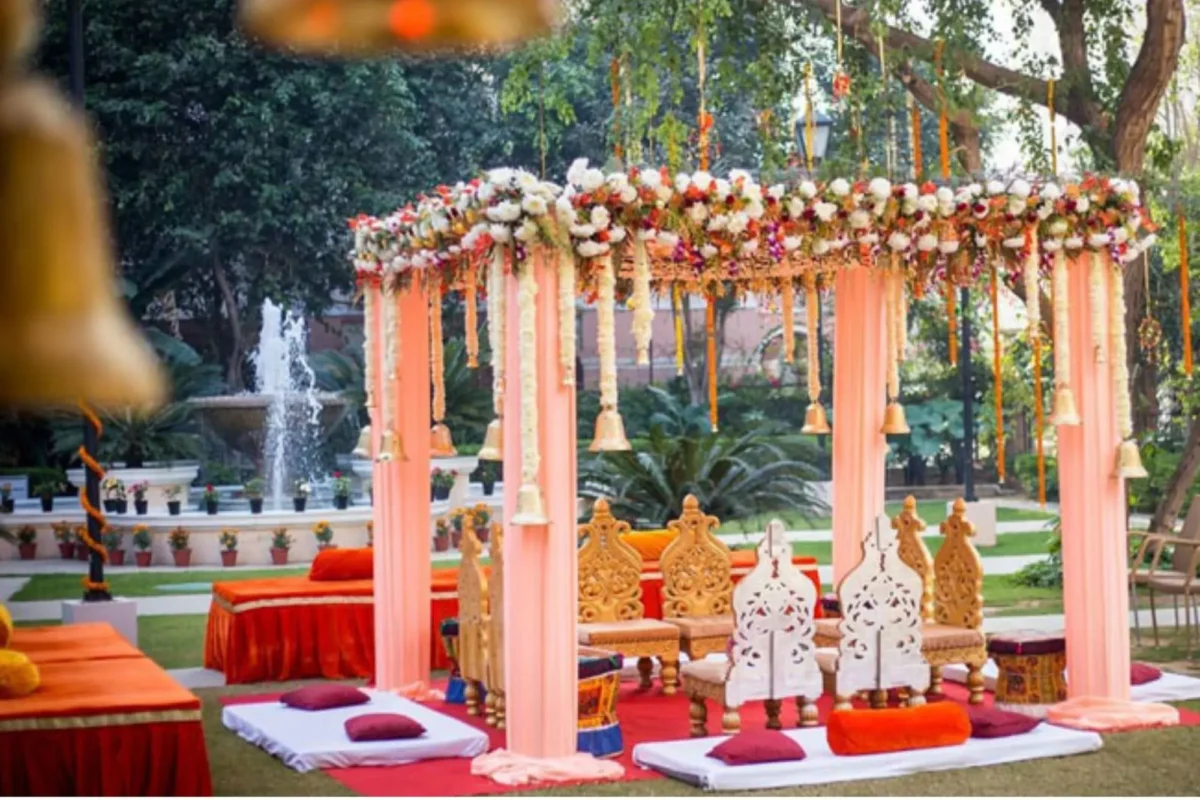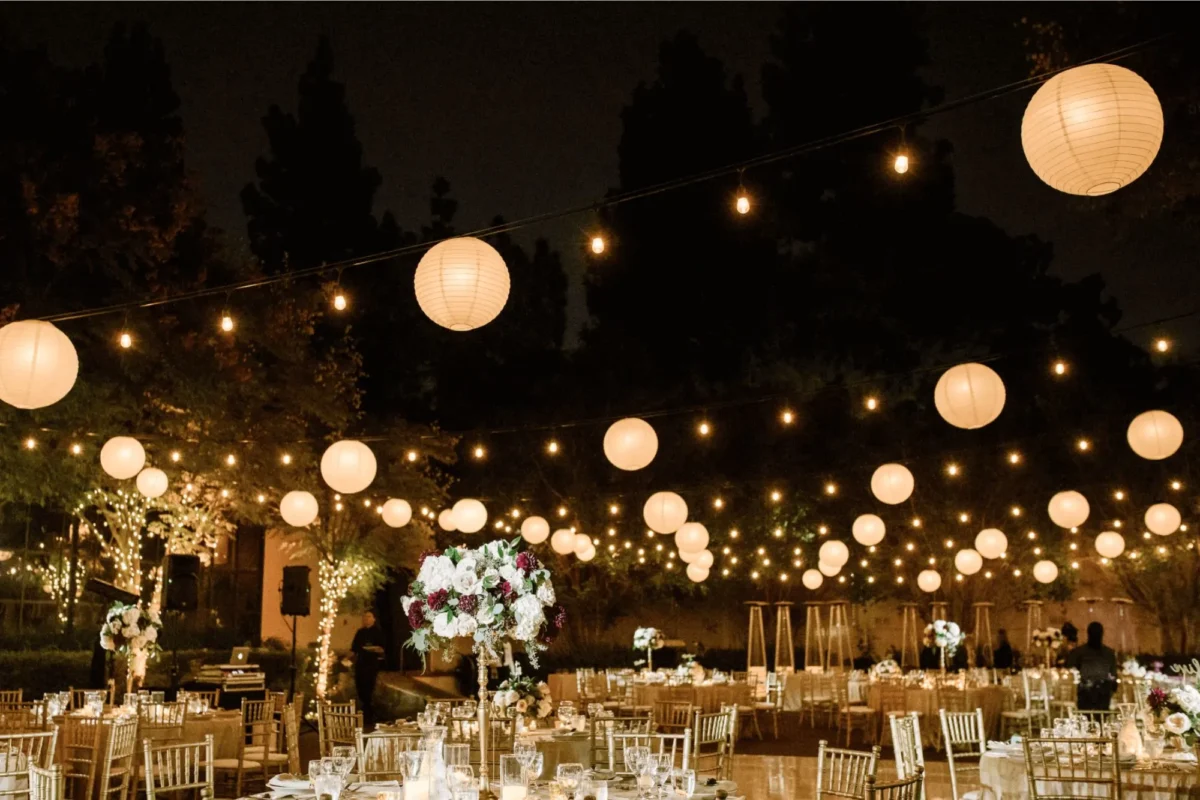While Indian weddings are known for grandeur, know how you can subtly embrace the quiet elegance aesthetic in your wedding decor for that timeless, sophisticated look.
Why does everyone think bigger always means better when it comes to wedding decor? You know what I’m talking about, right? Those over-the-top setups that scream for attention from every corner of the mandap. But here’s the thing: there’s something absolutely magical about the quiet elegance aesthetic that just hits different.
Picture this: you walk into a wedding venue and instead of being overwhelmed by a sensory explosion, you’re gently drawn into this dreamy, sophisticated world where every detail whispers luxury rather than shouting it from the rooftops. That, my friend, is the power of nailing the quiet elegance aesthetic in your wedding decor. At Wedding Affair, I’m here to spill all the tea on how you can create this effortlessly chic vibe for your special day.
Table of Contents
- The Art of Choosing Your Palette
- Florals That Speak Softly But Carry Big Impact
- Lighting: Your Secret Weapon for Instant Elegance
- Textures and Fabrics: The Unsung Heroes of Sophisticated Wedding Decor
- Small Details That Make the Biggest Difference
The Art of Choosing Your Palette (And Why Neutral Doesn’t Mean Boring)
Let me start with colours because, honestly, this is where most people either nail it or completely miss the mark. When we’re talking quiet elegance aesthetic, think of your colour palette as a whispered conversation rather than a loud debate.
You want to lean into those gorgeous muted tones that feel like a warm hug. Think dusty roses, sage greens, champagne golds, and those dreamy off-whites that look absolutely lovely when photographed. But here’s where it gets interesting for Indian weddings: you don’t have to completely abandon our vibrant heritage. Instead, take those traditional colours and dial down their intensity. A deep burgundy becomes a sophisticated wine, bright orange transforms into a subtle terracotta, and that bold royal blue? It becomes this gorgeous slate blue that still honours tradition while feeling incredibly modern.
The trick is working in a monochromatic or analogous colour scheme where everything flows together like a beautiful melody. Your wedding decor should feel cohesive, like each element was carefully chosen to complement the next, not compete with it.
Read Also: Unique Decor Themes for Mehendi
Florals That Speak Softly But Carry Big Impact
Now, let’s chat about flowers because this is where you can really make your wedding decor shine without going overboard. Forget those towering arrangements that block everyone’s view during dinner. We’re going for impact through intentional placement and gorgeous textures.
Think lush, organic arrangements that look like they could have grown naturally in that exact spot. Peonies, garden roses, eucalyptus, and baby’s breath are your best friends here. For Indian weddings, incorporate traditional blooms like jasmine and marigolds, but use them in unexpected ways. Instead of heavy garlands everywhere, create delicate jasmine installations that catch the light beautifully, or use marigolds sparingly as accent flowers rather than the main event.
The secret? Varying heights and textures. Mix tall, wispy arrangements with low, lush centrepieces. Add some trailing elements that create movement and visual interest. Your florals should feel effortless and romantic, like they belong in a secret garden rather than a flower shop display.
Lighting: Your Secret Weapon for Instant Elegance
Can we talk about how lighting can literally transform your entire wedding decor game? Because honestly, this is where the magic happens, and most people completely underestimate its power. Harsh, bright lighting is the enemy of the quiet elegance aesthetic. You want to create layers of soft, warm light that make everything (and everyone) look absolutely dreamy. Think fairy lights woven through draping, pillar candles at varying heights, and those gorgeous chandeliers that cast intricate shadows.
For Indian weddings, work with your venue’s existing lighting and supplement it strategically. If you’re having an outdoor function, string lights overhead create the most romantic canopy effect. For indoor ceremonies, consider uplighting in soft, warm tones that highlight your wedding decor without overpowering it. And please, please invest in some good candles; they add instant warmth and intimacy that no electric light can replicate.
Read Also: Know Wedding Colours for Decor That Never Go Out of Style!
Textures and Fabrics: The Unsung Heroes of Sophisticated Wedding Decor
Here’s something people often overlook: texture is everything when you’re creating that quiet elegance vibe. It’s what takes your wedding decor from looking flat and one-dimensional to feeling rich and layered.
Mix different textures thoughtfully: smooth silk draping alongside rough wooden elements, soft velvet napkins with crisp linen tablecloths, metallic accents that catch the light just right. For Indian weddings, this is where you can really honour tradition while keeping things sophisticated. Use beautiful handwoven fabrics, incorporate subtle gold threadwork, or add those gorgeous brass elements that have been part of our celebrations for generations.
The key is restraint. Choose two or three textures and repeat them throughout your wedding decor to create cohesion. Maybe it’s velvet, raw silk, and brushed gold. Whatever you choose, make sure each texture serves a purpose and contributes to the overall aesthetic.
Small Details That Make the Biggest Difference
You know what separates good wedding decor from the absolutely stunning quiet elegance aesthetic? It’s all in those tiny details that most guests won’t consciously notice but will definitely feel.
Think about the little touches: hand-written calligraphy instead of printed signs, vintage books as table risers, delicate ribbon instead of thick satin bows, mismatched vintage glassware that tells a story. For Indian weddings, consider incorporating meaningful elements like family heirlooms, traditional brass diyas used in unexpected ways, or beautiful vintage saris repurposed as table runners.
These details shouldn’t scream for attention, they should feel like natural, thoughtful choices that enhance the overall atmosphere. The goal is for your guests to feel like they’ve stumbled into something special and authentic, not a staged photo shoot.
Read Also: The Ultimate Indian Wedding Decoration Checklist
Frequently Asked Questions
Question 1: How do I incorporate traditional Indian wedding elements without losing the quiet elegance aesthetic?
The trick is reinterpreting traditional elements through a refined lens. Instead of heavy marigold garlands everywhere, use them sparingly as accent pieces. Replace bold, bright colors with muted versions. Think dusty rose instead of hot pink, or sage green instead of bright lime. You can still honor traditions like the mandap, but execute it with softer draping, subtle metallics, and organic floral arrangements that feel more garden-party than temple festival.
Question 2: What’s the biggest mistake people make when trying to achieve this look?
Honestly? Overthinking it and adding too much. The quiet elegance aesthetic is all about restraint and intentionality. I see couples who understand the concept but then panic and start adding “just one more” element until they’ve completely lost the sophisticated simplicity they were going for. Trust the process, stick to your vision, and remember that empty space is just as important as decorated space.
Question 3: Can this aesthetic work for larger Indian weddings with 300+ guests?
Absolutely! In fact, it can be even more impactful with larger numbers. The key is creating zones and moments of quiet elegance rather than trying to decorate every single inch. Focus on high-impact areas like the entrance, mandap, and a few key photo spots, then keep everything else simple and cohesive. Large weddings actually benefit from this approach because it prevents visual chaos and creates those Instagram-worthy moments guests will remember long after the celebration ends.










